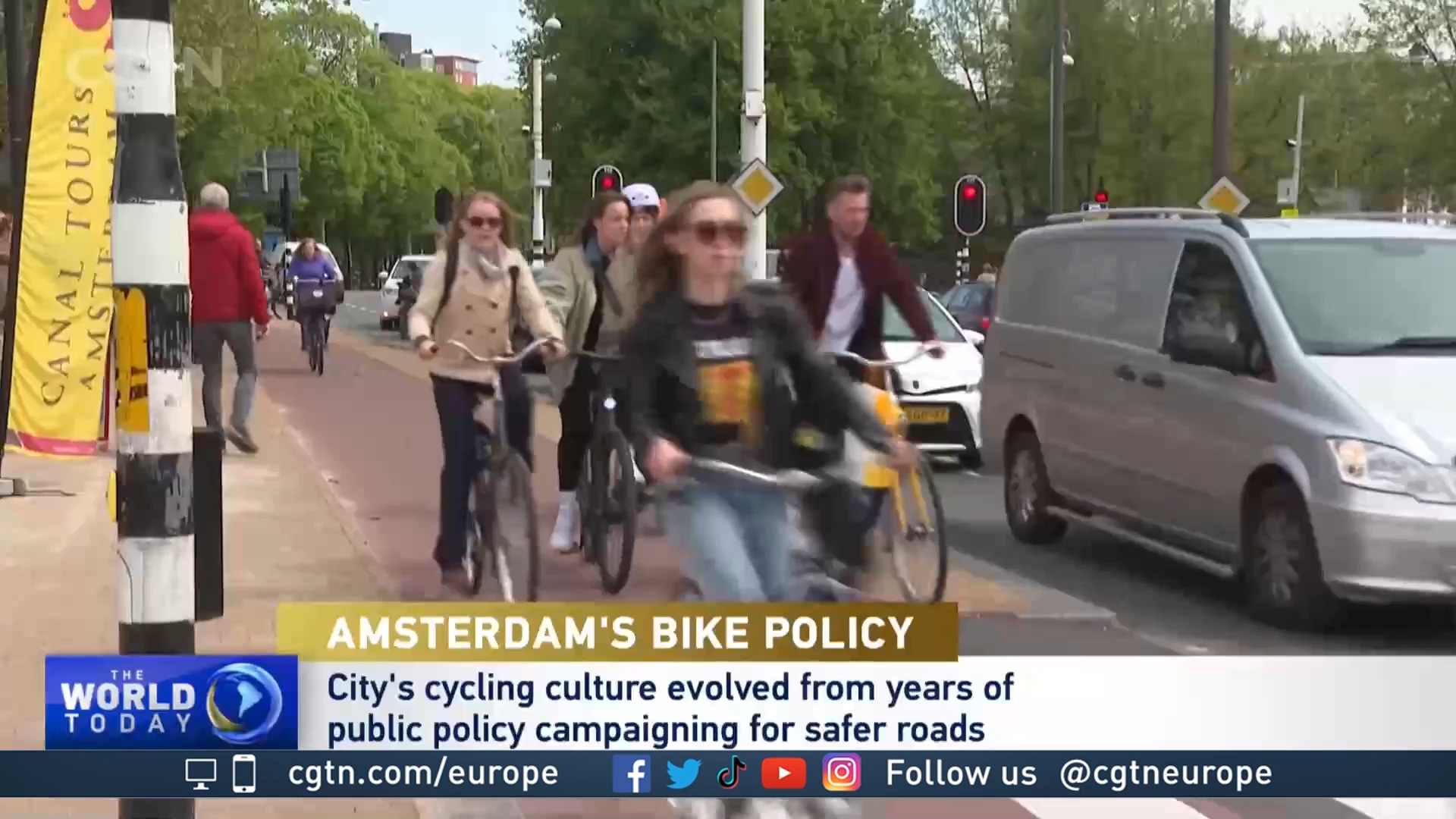02:30

Amsterdam's status as one of the world's most bike-friendly cities can easily be taken for granted – assuming that cycling has just always been a part of Dutch life, and that having more bikes than people is unique to Amsterdam.
While cycling has always been popular in the Netherlands, cities like Amsterdam saw the same huge rise of car use and car ownership as other European cities in the 1950s and 1960s.
This surge created a dramatic drop in bicycle use – in 1950, 80 percent of trips in the city were made by bike, but 20 years later, that number had plummeted to 30 percent. Then in 1971, the city recorded its highest ever number of traffic fatalities when 3,300 people lost their lives on the city's roads, including 400 children.
The story of Amsterdam's love of bikes isn't just cultural – it's the story of decades of determined advocacy by activists and local politicians who fought long and hard to establish cycling as a safe, practical and sustainable way of traveling around the city. Those record fatalities in 1971 started a process which local authorities say carries on today.

Amsterdam's first underwater bike park is right next to the central station. /Alex Cadier/CGTN
Amsterdam's first underwater bike park is right next to the central station. /Alex Cadier/CGTN
"For about 40 and 50 years, we've been taking the bicycle very seriously in our urban planning, in our street design, in our policies," says David Gelauff, the head of Amsterdam's cycling program. "For instance, one of those things is that wherever possible, we separated bike lanes so they were separate from car traffic. If it wasn't possible, we made sure it was very well-marked."
While safety is a big part of increasing bicycle usage, Amsterdam demonstrates how other factors can't be overlooked. Infrastructure is crucial, and while this includes cycle lanes, bike parking – in practical locations and interconnected with other modes of transport – is a game-changer.
In January 2023, the city opened its first underwater bicycle parking garage, with 7,000 spots, beneath a canal next to the city's central station, with exits leading directly to the trains. Cycling in the Netherlands is so integral to commuting that half of the country's train passengers reach the station by bike.
No soft-pedalling on improvement
But even in one of Europe's most bike-friendly countries, there is still room for improvement.
"There's a large segment of the population – up to 50 percent in some cities – where residents are interested but concerned," says Meredith Glaser, Executive Director of Amsterdam's Urban Cycling Institute.
"They're interested in cycling, but they're concerned about safety, they're concerned about how it fits into their own lifestyle. One first step that any local government can do is experiment with different street design and also provide an expansive network."
Cycling in the Netherlands is also about more than just getting around. A recent study estimated that if all nations cycled as much as the Dutch, global carbon emissions would drop by nearly 700 million tons a year – offsetting the equivalent of Canada's entire carbon footprint.
On cycling, through decades of pro-cycling policymaking, the Dutch have set the standard – one that the world might want to think about following.

Subscribe to Storyboard: A weekly newsletter bringing you the best of CGTN every Friday